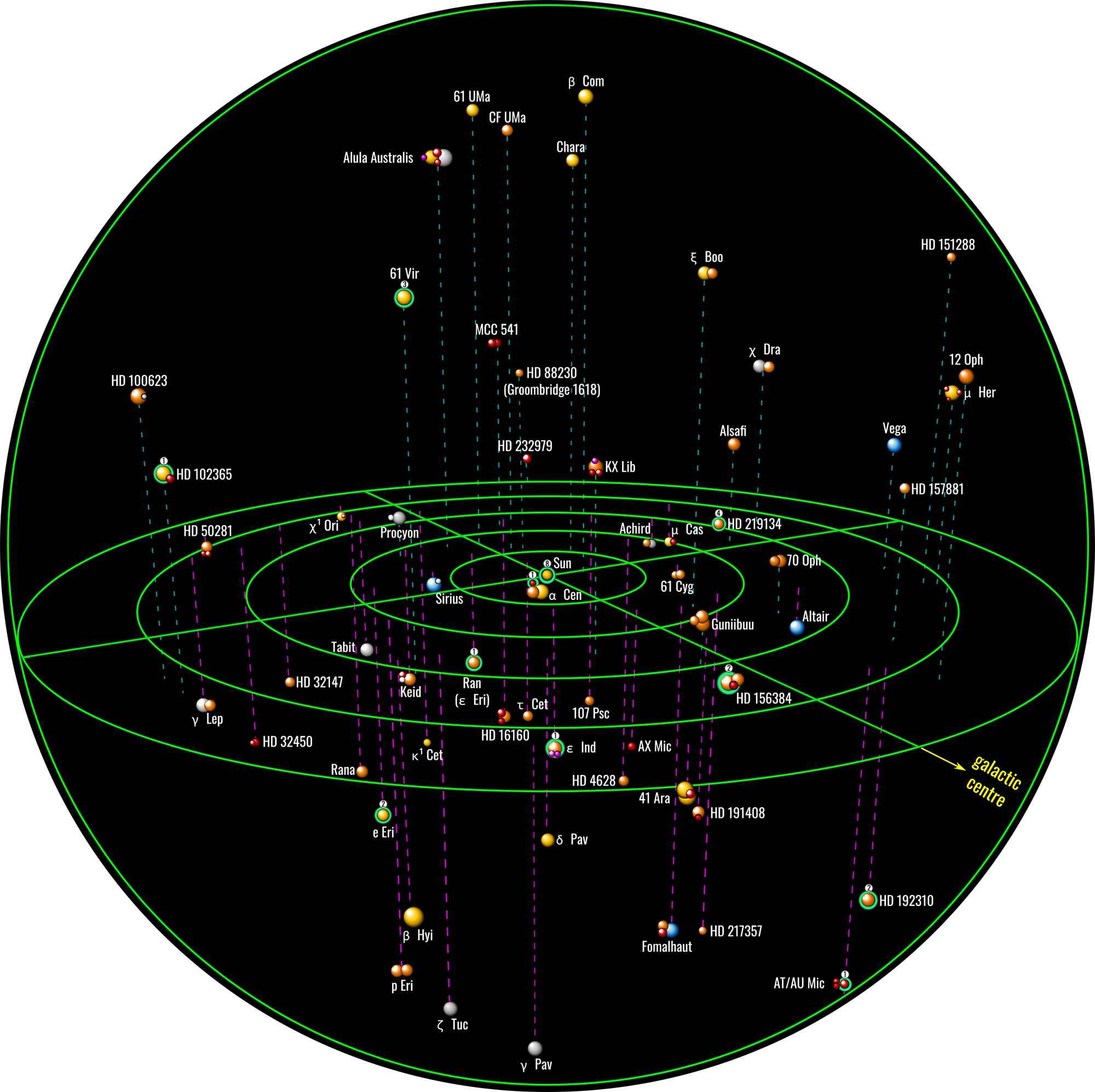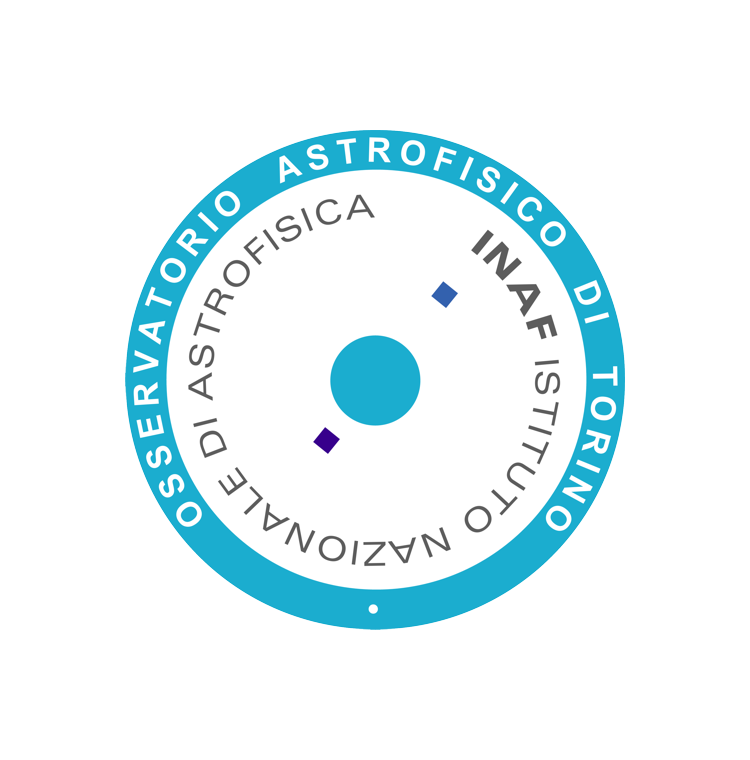CoolStars22
The Solar Neighbourhood – The Importance of Being Complete
Program
14:00 – 17:30 Tuesday 25 June 2024, San Diego
The splinter will be split into two sessions. The first will have classical invited and contributed presentations. The second will start with presentations motivating the main outstanding observational questions, along with their limitations and interpretation. The meeting will then split into smaller subgroups in which these questions will be discussed in detail.
Session 1 (14-15:30)
In preparation
The Solar Neighborhood is dominated by stars smaller, colder, and fainter than the Sun: the M dwarfs. The nearest planets all orbit M dwarfs; if we are to understand the architectures, occurrence rates, and properties of nearby planets, then we must investigate the stellar companion rates and characteristics of our low-mass neighbors. We have therefore carried out the Pervasive Overview of Kompanions of Every M Dwarf in Our Neighborhood (POKEMON) speckle survey of nearby M dwarfs. Our sample is volume-limited through M9 out to 15 pc, with additional brighter targets at larger distances. In total, we observed 1125 nearby M dwarfs at diffraction-limited resolution; 455 of these are in our volume-limited sample. After supplementing our companion detections with an in-depth literature search, we find an M-dwarf multiplicity rate of 23.5±2.0% and a companion rate of 28.8±2.1%. Strikingly, we find the projected separations of planet-hosting multiples are more than an order of magnitude larger than those of the non-planet-hosting multiples. This talk will present an overview of POKEMON I-III, future directions of the POKEMON survey, and our efforts to use Gaia to characterize our sample, find hidden companions, and achieve a homogenous, volume-complete survey of M-dwarf multiplicity.
Stars with masses below 10 solar masses (97% of the stellar population) will end their lives as white dwarfs. The temperature of a white dwarf is a proxy for the star’s cooling age, as it does not undergo fusion. Unbiased volume-limited samples of white dwarfs enable the study of the properties and evolution of these stars across all ages, however the white dwarf luminosity function peaks at faint magnitudes, and therefore, most white dwarfs are cool, faint and difficult to detect. Using Gaia parallaxes, and following up with medium-resolution spectroscopy, as of this year we now have an essentially volume-complete sample of just over a thousand white dwarfs within 40 pc, with defined atmospheric compositions. The faintest and oldest white dwarfs are only visible out to 40 pc with current spectroscopic instrumentation, so this sample will be the benchmark white dwarf volume sample for many years. I will present an overview of the 40 pc white dwarf sample, how it was defined, and the reasons for any stars potentially missing from the sample. I will also present our analysis on the properties of the 40 pc sample including spectral evolution, mass distributions, space density, and multiplicity. I will discuss some of the remaining scientific questions in the research field of white dwarfs, regarding the origins of magnetism in white dwarfs, and the fraction of white dwarfs hosting planetary systems, which can be answered using follow-up observations of the 40 pc sample.
Eight years, more than 70 new planets and almost 140 refereed publications after CARMENES’ start of operations at Calar Alto and an introductory plenary talk at CS19 in Uppsala, it is time to look back and, why not, forward. CARMENES has not only discovered many planets around bright nearby M dwarfs, including many transiting or in their habitable zone, but has also characterized in unprecedent detail their stellar hosts (activity, astrophysical parameters, element abundances, multiplicity) and has even studied their atmospheres. As a result, CARMENES and its almost-volume-limited target sample, in concurrence with Gaia, TESS, XMM-Newton and many others, has become one of the most successful facilities to investigate the immediate solar neighbourhood (d < 20 pc). The contribution will summarise the most relevant CARMENES results, its near- and mid-term future, and its impact on the science topics of “Cool Stars as Stellar Systems” in general and the completeness of the solar neighbourhood in particular.
As we enter an era where data is abundant, large imaging surveys (e.g. DESI’s Legacy Surveys, WISE) and catalogs containing billions of sources (e.g. Gaia, CatWISE2020) offer an unprecented opportunity for new discoveries in the quest for volume completeness. However, ensuring that we are fully utilizing these large datasets can be a challenge. In this talk, i’ll discuss how citizen science can be an antidote to the challenges of big data, giving scientists access to millions of science enthusiasts who can apply both manpower and their unique skills to the task. I’ll show how they are effective at outlier detection, finding objects within the local volume outside our typical search criteria, and I’ll present some original research, performed as a citizen scientist, that seeks to expand the census of objects in local young moving groups, the completeness of which directly informs our understanding of the initial mass function.
15:30-16:00 – coffee break
Session 2 (16-17:30)
Galactic halo stars have long been interesting objects to stellar astronomers. As some of the oldest and most metal-poor stars in the Galaxy, they inform us on star formation as a function of age and metallicity. And yet, our understanding of the multiplicity fraction, binary distribution, and mass-luminosity relation of the nearby halo population is still lacking, particularly for low-mass stars. This is due to a lack of identified nearby halo binaries and instruments that make follow-up efficient. However, with Gaia and the deployment of high-resolution imaging instruments on large telescopes, we can now work to find these binaries and further our understanding of this population. We present preliminary results from the MUltiplicity of Galactic Stars in the Halo and Orbit Tracking Survey or MUGSHOTS. Using high-resolution imaging at Lick Observatory and Gemini Observatory, we have been observing nearby halo stars to precisely determine the multiplicity fraction and binary distribution of this population and identify binary systems from which masses of the components can be determined. Out of 221 systems observed, with 889 still to be observed, we find 18 systems. Taking into account Gaia wide binaries, we find a multiplicity fraction of 11.8% ±2.4%. Compared to previous values, our fraction is slightly lower. Our low rate of binaries highlights the need to be complete in order to find these binaries and fully understand this nearby population.
The RECONS Team is creating volume-complete lists of K dwarfs within 50 pc (RKSTAR) and M dwarfs within 25 pc (RMSTAR) containing about 4000 stellar systems each. Together, K and M dwarfs account for 86% of all stars, making them essential to studies of a broad range of astrophysical questions. We discuss steps to make the lists the best in the world and some specific science results, led primarily by students, that place our understanding of these stars on firm statistical ground for the first time.
The censuses and mass functions of K and M dwarfs within these horizons are effectively done — there is no doubt that the mass function rises to the end of the stellar main sequence. Assessing stellar companions at all separations is well underway via our speckle and radial velocity surveys, long-term astrometry work at the SMARTS 0.9m, Gaia DR3 results, and the literature. A few highlights: multiplicity rates of ~40% for K dwarfs and ~30% for M dwarfs, ~10% of K dwarfs are young and/or active, and M dwarf orbits are tidally circularized below periods of 7 days. As of March 2024, there are planets reported orbiting 132 RKSTAR K dwarfs and 106 RMSTAR M dwarfs — discovery rates of only 3% in both samples — implying that there are thousands more planets waiting to be found very near the Sun.
This effort is supported by the NSF through grants AST-1910130/1909560/2108373, by NASA XRP grant 80NSSC23K028, and via observations made possible by the SMARTS Consortium.
In preparation
In preparation
Session Organizers
Céline Reylé, Besançon Observatory
Davy Kirkpatrick, IPAC/Caltech
Daniella Bardalez Gagliuffi, Amherst College
Ricky Smart, INAF-OATo
Questions to celine.reyle@obs-besancon.fr
Submit a talk
The submissions for talks has closed.
Poster submission and registration
For posters and registration
please use the main meeting site:
https://coolstars22.github.io/

